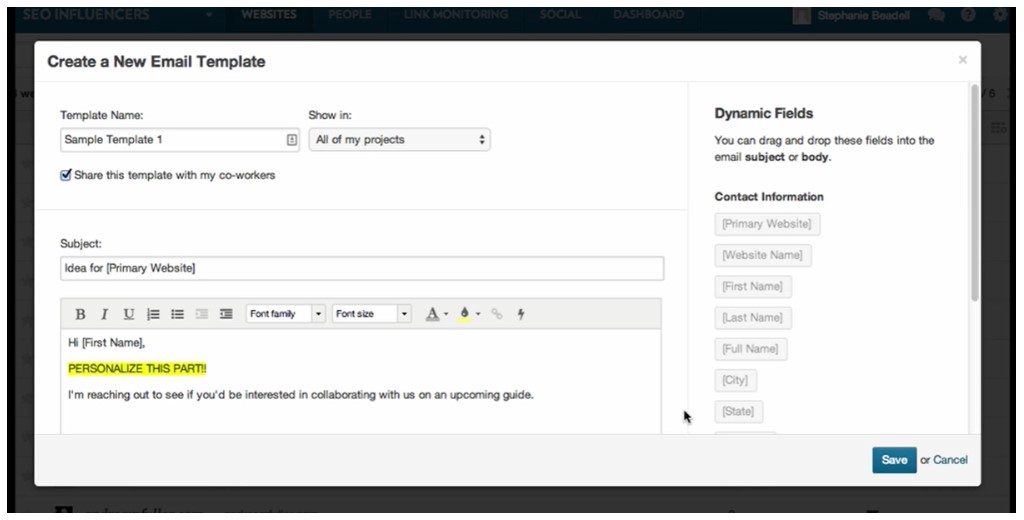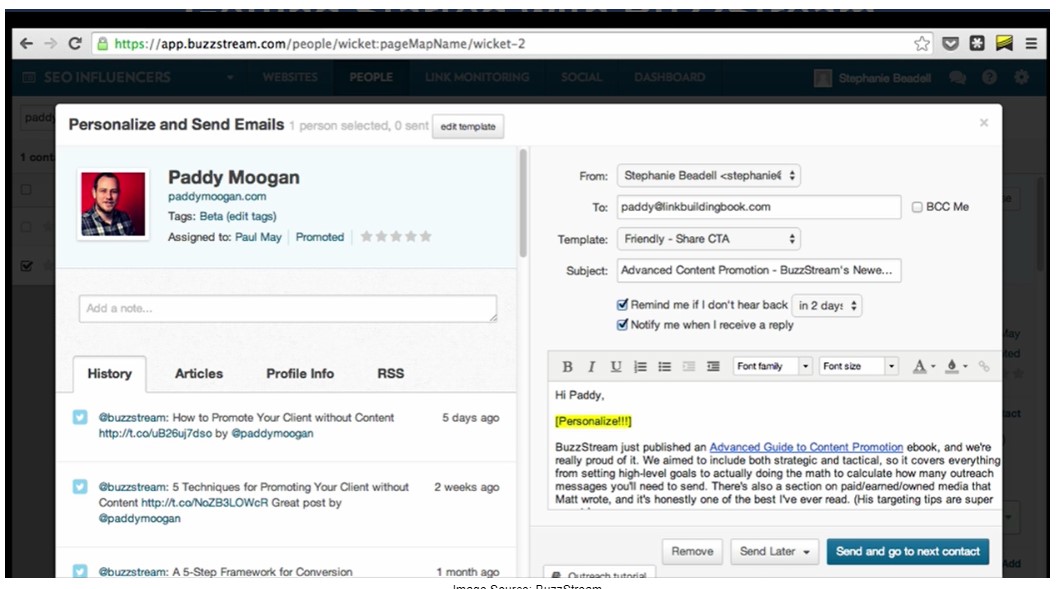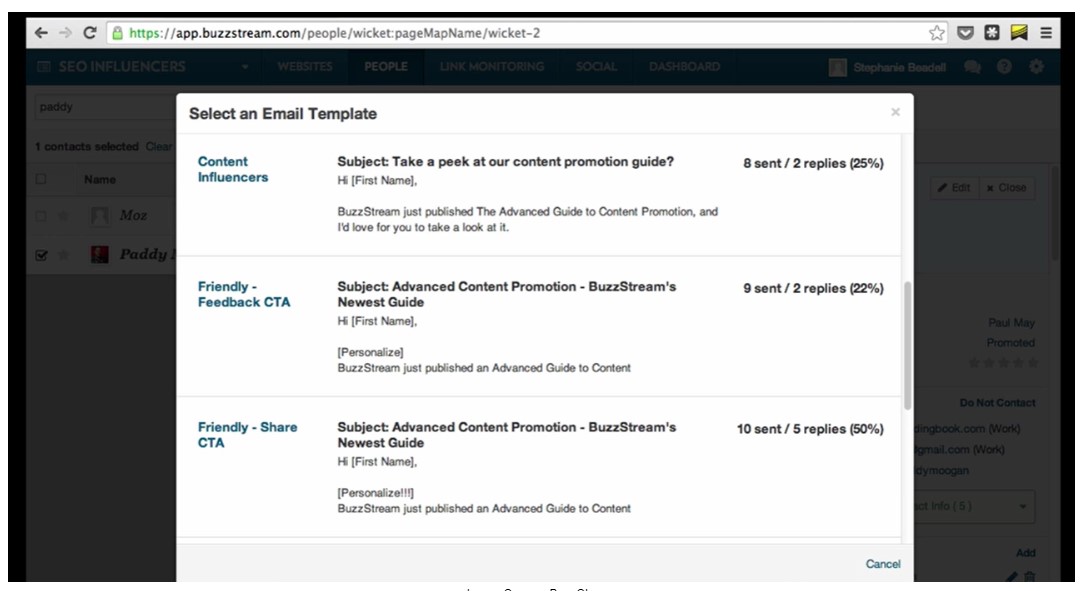In today’s digital age, businesses must have a solid outreach process to stay competitive and grow. With the right plan, organizations can increase brand visibility, enhance trust, establish partnerships, and ultimately achieve their business goals. Out of the seventy participants in a survey, more than 80% do the prospecting, outreaching, and idea generation by themselves, and more than half write the guest posts and do guest blogging on more than one website.
But how can you create an outreach process that consistently delivers results?
In this article, we’ll walk you through a step-by-step guide to building an effective outreach process, from finding relevant websites to crafting compelling email templates. Following this guide will enable you to develop a strategy that can boost your brand’s reputation, accelerate growth, and expand your reach.
Table of Contents
Why do you need an effective outreach process?
An effective outreach process is crucial for any organization looking to grow and thrive in today’s competitive marketplace. Here are the benefits it offers.
Increased visibility of your brand, product, or service
An effective outreach process helps you create a buzz around your products and services by strategically targeting new relevant audiences. This increased visibility generates awareness and strengthens your brand’s reputation, attracting more customers and increasing sales.
Enhanced trust with your target audience
One of the purposes of outreach efforts is to get mentions and backlinks in high-authority relevant websites, which will ultimately help position you as an industry expert and thought leader. This can increase trust and a long-lasting connection with your target audience.
New partnerships and collaborations leading to potential growth opportunities
An effective outreach process also opens doors for partnerships and collaborations with other businesses, influencers, and industry leaders. These alliances can lead to new growth opportunities, such as co-marketing campaigns, product development collaborations, and strategic partnerships. Thus, by joining like-minded organizations, you can expand your reach and tap into new markets, accelerating your growth.
Potential for increased media coverage and PR opportunities
A well-planned outreach strategy can increase media coverage and public relations opportunities. This coverage can further enhance your brand’s credibility and visibility, leading to more organic growth and a stronger reputation in your industry.
Elevated business goals
Ultimately, an effective outreach process contributes to achieving your business goals. No matter what you aim for (increase sales, expand your customer base, or establish your brand as an industry thought leader), outreach plays a critical role.
Remember that success lies in continuously refining your outreach strategy. This will ensure that your efforts align with your objectives, driving growth for your organization. How can you make it work for you?
Here are seven steps for an efficient outreach process that brings positive results for your brand.
Step 1: Find relevant websites
The first step to kick off your outreach process is identifying websites relevant to your niche and audience. These websites should align with your brand’s values and cater to a similar target market. Connecting with these sites will ensure that your content reaches the right people and generates a higher return on investment.
Use Ahrefs to find the right sites
Ahrefs is a powerful SEO tool that can help you find websites that meet specific criteria, such as high traffic, strong backlink profiles, or a particular domain rating. By using Ahrefs, you can gain insights into the most influential websites in your industry and discover potential outreach targets. Follow these steps to use Ahrefs to find relevant websites:
- Sign up for an Ahrefs account and log in to the platform.
- Use the “Content Explorer” feature to search for keywords related to your niche.
- Apply filters such as Domain Rating, Organic Traffic, and Referring Domains to narrow your search results.
- Analyze the websites that appear in the search results and check their relevance, content quality, and audience engagement.
Create a list of target websites
Once you have identified potential websites using Ahrefs, compile a list of 10-20 sites that align with your niche and audience. This list will serve as the foundation for your outreach efforts. Consider the following factors when creating your list:
- Relevance: Ensure that the websites you choose are related to your niche. This will help you reach a better-targeted audience and acquire relevant backlinks.
- Authority: Target websites established as authorities in your niche. Collaborating with them can boost your credibility.
- Audience: Look for websites that cater to your target audience. This will increase the chances of provoking interest in your content, expanding your audience, and generating high-quality leads.
- Engagement: Pay attention to audience engagement on the website, such as comments, social shares, and backlinks. High engagement indicates a loyal and active audience, which can benefit your outreach efforts.
With your list of relevant websites in hand, you are now ready to proceed with the next steps in the outreach process. Remember that the quality of the websites you choose to target will play a significant role in the success of your outreach efforts. So be thorough in your research and selection.
Step 2: Create email templates
Crafting well-thought-out email templates will help you establish a connection with your target websites and convey your intentions effectively. Here’s what you need to consider:
Introduce yourself and your business
In your first email template, you should introduce yourself and your business to the recipient, explaining why you’re reaching out. This initial email is crucial for capturing the reader’s attention and setting the tone of your relationship. Check out the key elements you should include in your introduction email template:
- A warm and friendly greeting
- A brief introduction of yourself, your role, and your company
- An explanation of why you are reaching out to them, highlighting the relevance of your content to their website or audience
- A clear and concise value proposition outlining the potential benefits of collaborating with you or featuring your content
- A call-to-action, encouraging the recipient to respond or express their interest in learning more
Create follow-up email templates
Follow-up emails are essential for keeping the conversation and the recipient interested in your outreach. These templates aim to gently remind the recipient of your initial email, address any concerns or questions they may have, and reiterate the value of collaborating with you. Here are some tips for creating effective follow-up email templates:
- Use a friendly and polite tone, acknowledging the recipient’s busy schedule and thanking them for their time.
- Reference your initial email, reminding the recipient of your previous conversation and the purpose of your outreach.
- Offer additional information or resources, such as links to relevant articles or examples of your work, to demonstrate your credibility and expertise.
- Include a clear call-to-action, inviting the recipient to respond, ask questions, or provide feedback.
Step 3: Craft compelling email titles
The subject line is often the first thing your recipient will see when they receive your email. An engaging and well-crafted subject line can significantly increase your email open rates and improve the chances of your outreach efforts being successful. To craft compelling email titles that grab readers’ attention, use the following tactics:
- Ask questions, as this results in about 48% open rates, which is nearly 10% higher than the average ones (39.71%)
- Include numbers that will generate a 45% higher open rate
- Create a sense of urgency because words like “now,” “today,” and “quick” get an open rate of up to 31.7%.
- Personalize your subject lines; this means a 26% greater chance of being opened.
- Keep it concise and clear, and note that about 70% of email marketers keep their email subject lines below 60 characters long.
Need some more details? Simply check out our posts providing inspirational outreach subject lines and email follow-up subject line examples and get valuable, practical ideas.
Step 4: Think over great post ideas to pitch
To maximize the impact of your outreach efforts, it’s crucial to develop compelling post ideas that resonate with your target website and its audience. This way, you’ll demonstrate your understanding of the recipient’s content needs and showcase your expertise in your niche. Here are some strategies for thinking over great post ideas to pitch in your outreach emails.
Research the target website’s content
Spend time browsing the target website to understand the type of content they typically publish, their audience’s preferences, and the topics they cover. This research will help you identify potential gaps in their content and opportunities for your guest post. Use Google search operators to check if the topic wasn’t covered on the website: site:www.website.com your keyword.
Consider the audience’s needs and preferences
Always keep the target website’s audience in mind when brainstorming post ideas. Focus on addressing their pain points, answering their questions, or providing actionable advice that they can apply to their situation.
Provide a list of potential topics
Offer multiple topic ideas in your outreach email so you can give the recipient more options to choose from. This approach also showcases your versatility and expertise in your niche.
Here’s an example of what you can include in your email:
“I’ve thought of a few potential topics that I believe would make a great addition to your website content:
- The Role of Artificial Intelligence in Modern Marketing Strategies
- The Rise of Micro-Influencers: How Brands Can Leverage Niche Audiences
- The Ultimate Guide to Crafting High-Converting Landing Pages.”
Now that you know how to craft your pitch, you may wonder to whom you should send it.
Step 5: Find relevant people to contact
Reaching out to the appropriate individual increases the chance for your message to be read and considered. This step is essential for having a successful collaboration. Here’s what you need to do:
Explore the website for contact information
Browse the target website to find email addresses or contact forms. Pay special attention to pages such as “About Us,” “Our Team,” or “Contact Us.” These pages often provide information about the team members responsible for content or partnerships and may include direct contact details.
Check credentials under blog posts
Inspect the author’s credentials to identify potential contacts. Content editors, marketing managers, or contributors may be the appropriate individuals to contact regarding guest posting or collaboration opportunities.
Leverage social media
Social media platforms like LinkedIn, Twitter, and Facebook can also provide valuable contact information. Search for the target website or its team members on these platforms to find their profiles, which may include direct contact details or additional information that can help you craft a personalized outreach message.
Use email-finding tools
If you cannot find direct contact information on the website, consider using email finders like Hunter, VoilaNorbert, or Apollo. Such tools can help you discover the email addresses of individuals associated with the target website by simply entering the domain name.
In our blog article dedicated to the best email finder tools, you’ll discover the most essential of their details, features, and capabilities to choose the one that fits your needs.
Step 6: Set up the campaign in your outreach software
Using outreach software can significantly streamline your outreach process, making managing your campaigns and tracking your progress easier.
Choose the best outreach software for your needs
Numerous outreach tools are available, each with unique features and capabilities. Some popular options include BuzzStream, BuzzSumo, and NinjaOutreach. We highly recommend using BuzzStream, as it’s one of the best guest post outreach software. However, you can look at these tools and choose the one that best suits your needs, budget, and goals.
We’ll use BuzzStream as an example for this guide, but the process should be similar for other tools.
Set up your campaign in BuzzStream
Once you’ve chosen your outreach software, set up your campaign by following these steps:
- Create a new project or folder for your campaign.
- Import your list of target websites and contacts.
- Add any relevant tags or notes to help you stay organized.
- Create email templates for automation: In BuzzStream, create automated email templates for your initial outreach and follow-up messages. These templates should be based on the ones you created in Step 2, with placeholders for personalization and other relevant details. Here’s how:
Image Source: BuzzStream
- Go to the “Templates” section in BuzzStream.
- Create a new template for your initial outreach email and any follow-up emails.
- Add your pre-written content, including placeholders for personalization.
- Set up automated sending rules, such as the number of days between follow-up emails.
Launch your campaign
With your templates and automation rules in place, you’re ready to launch your campaign.
Image Source: BuzzStream
BuzzStream will automatically send your emails according to your schedule, making it easy for you to focus on other aspects of your outreach efforts.
Keep track of the responses you receive
BuzzStream and similar tools allow you to monitor your campaign’s progress, including open rates, response rates, and conversions. In BuzzStream, for instance, you can track the performance of each of your templates. The tool shows how many times you’ve used each template and how many times each template has generated a reply.
Image Source: BuzzStream
Pay close attention to the responses you receive and adjust your templates or approach as needed to improve your results. Follow up with recipients who express interest in your proposal, and be prepared to provide additional information or negotiate terms as necessary.
Step 7: Analyze your outreach process
Analyze your process and make data-driven adjustments to improve your outreach efforts and maximize their effectiveness continually. Here’s how:
Monitor your campaign success
Using the outreach software you’ve chosen, keep an eye on the various metrics and statistics related to your campaign. Some key metrics to track are email open rates, response rates, and conversion rates.
Look for areas of improvement
Based on the metrics you’re tracking, identify areas where you can improve your outreach process. Common areas for improvement include:
- Email templates: If your response rate is low, consider revising them to make them more compelling, personalized, or relevant to the recipient.
- Subject lines: If your open rates are low, try experimenting with different subject line strategies, such as asking questions, incorporating numbers, or creating a sense of urgency.
- Timing and frequency: Test sending your emails at different times or days of the week to see if it impacts your open and response by rates.
Adjust your strategy accordingly
Once you’ve identified areas for improvement, make the necessary adjustments to your outreach strategy. Continually test and refine your approach, using your campaign metrics to guide what’s working and what’s not.
Track your progress over time
As you adjust your outreach process, monitor your progress over time. This will help you determine whether your changes have a positive impact and allow you to identify new areas for improvement as your campaigns evolve.
Bonus tip: Use your outreach processes to build relationships
As a final takeaway, let’s discuss an extra tip to maximize the effect of your outreach. Once your guest post has been approved, don’t stop there. Continue to communicate with your contact person and express gratitude for the opportunity. Offer your support and assistance for any additional tasks related to your collaboration, such as promoting the content on social media, responding to comments, or providing additional resources.
After your initial collaboration, be proactive in suggesting additional ways you can work together. This could involve pitching new guest post ideas, proposing joint webinars or podcasts, or offering to collaborate on research projects or case studies. Demonstrating your ongoing interest and commitment to the partnership can reinforce your relationship and open doors to more opportunities.




